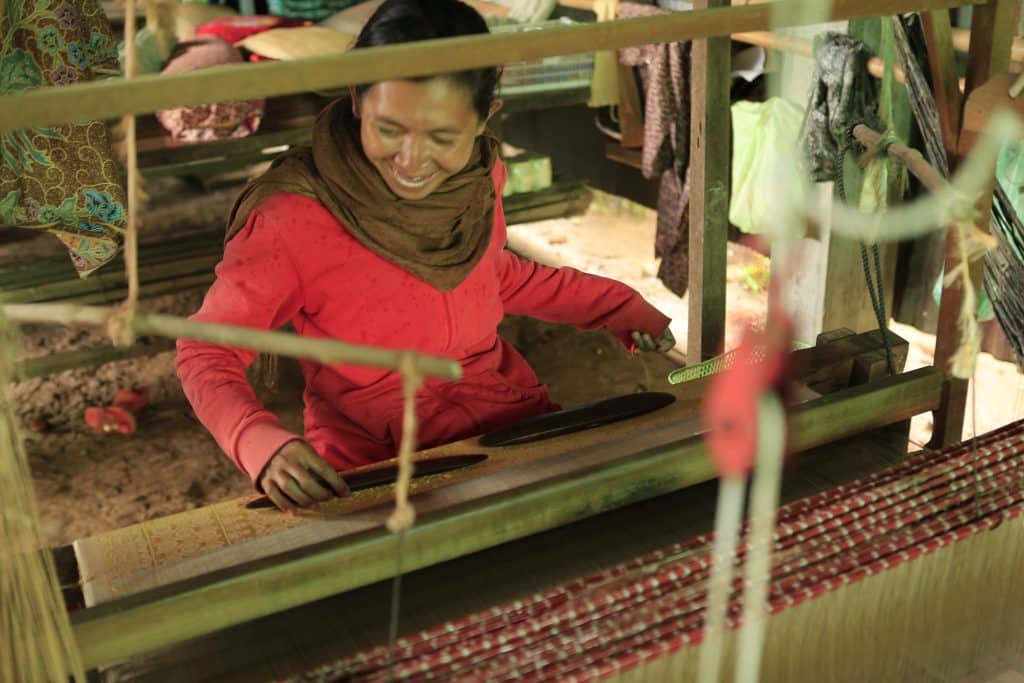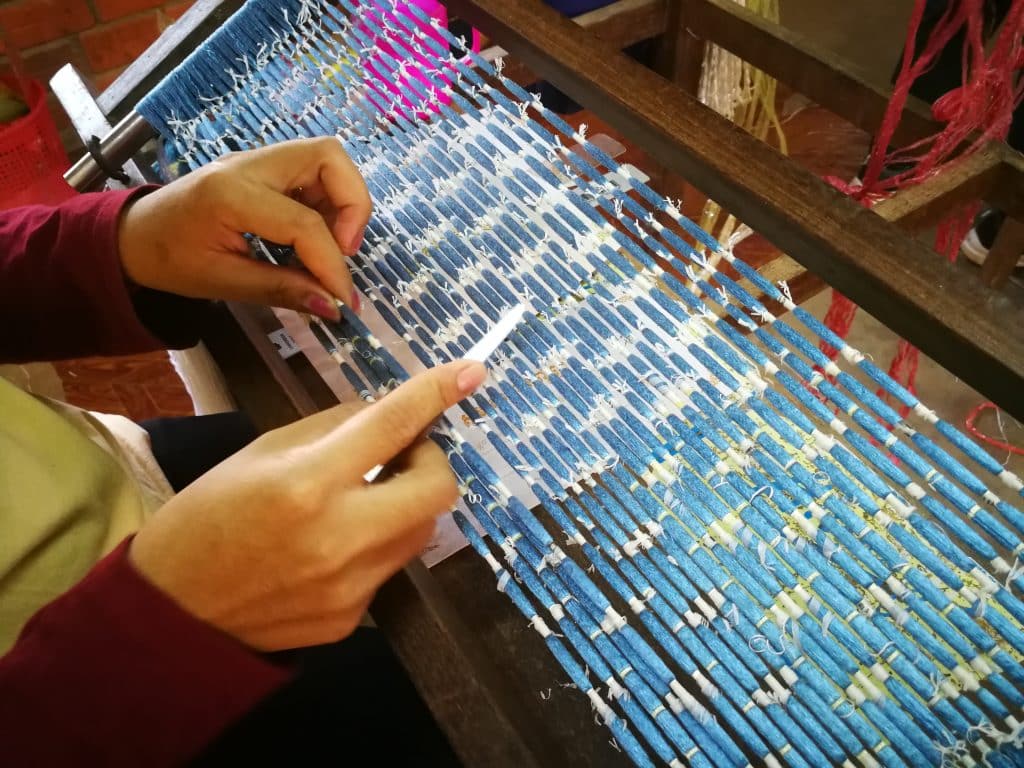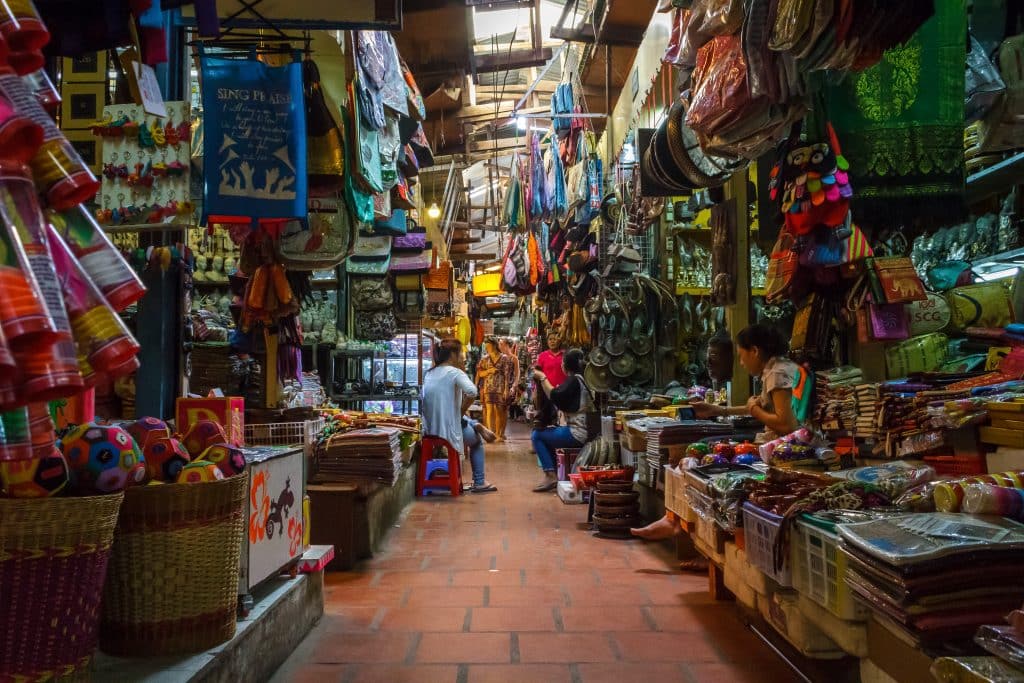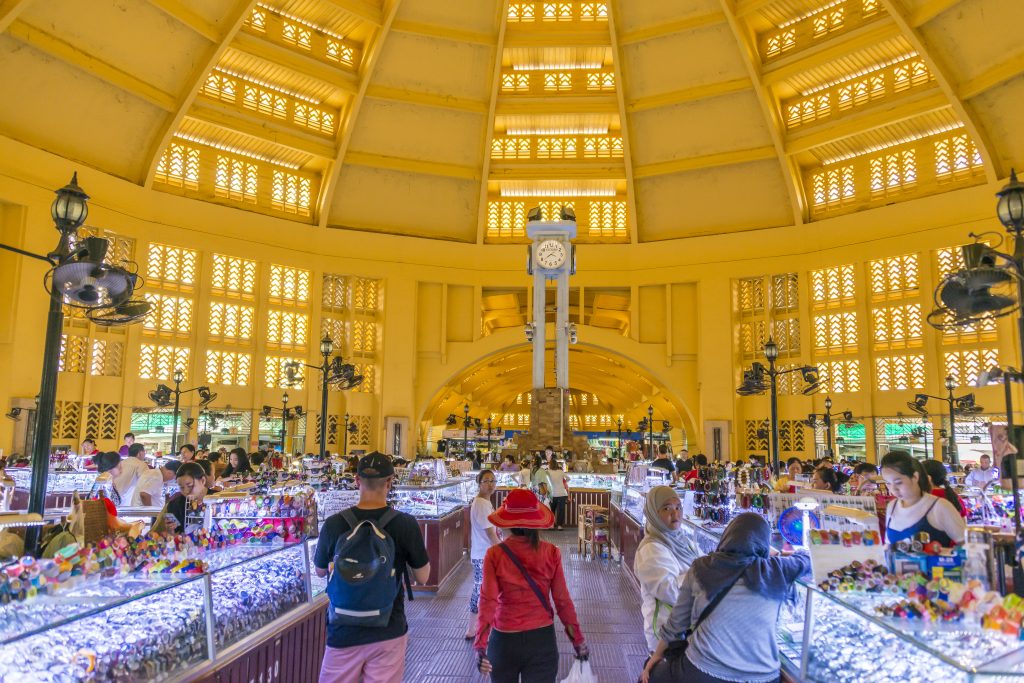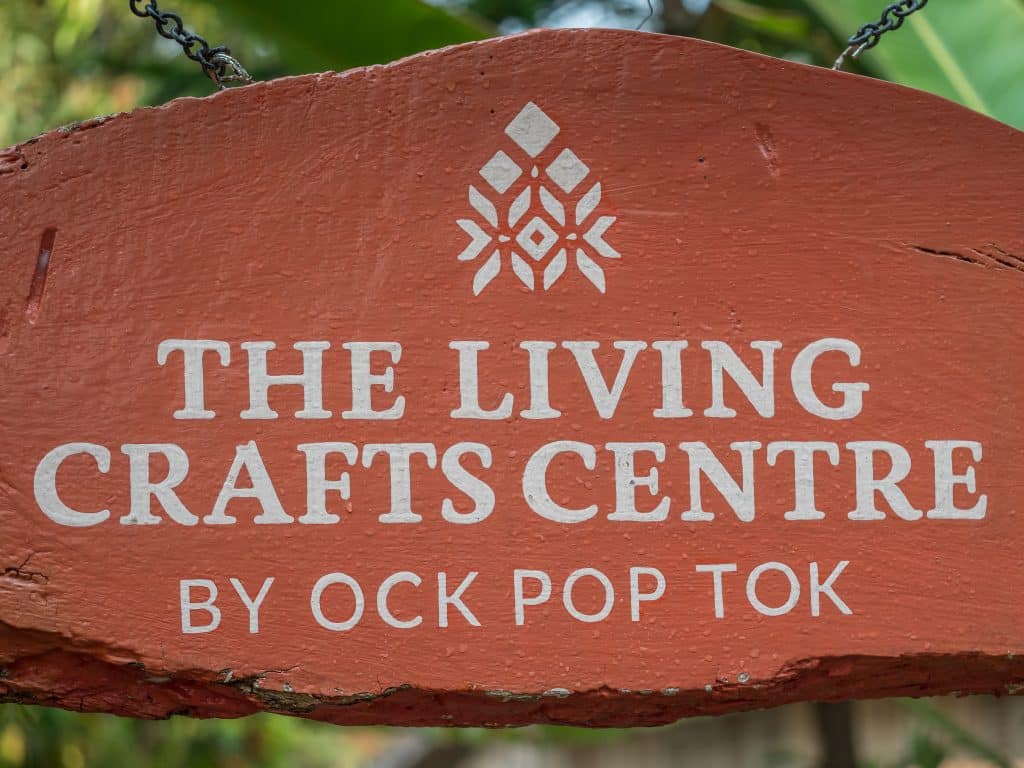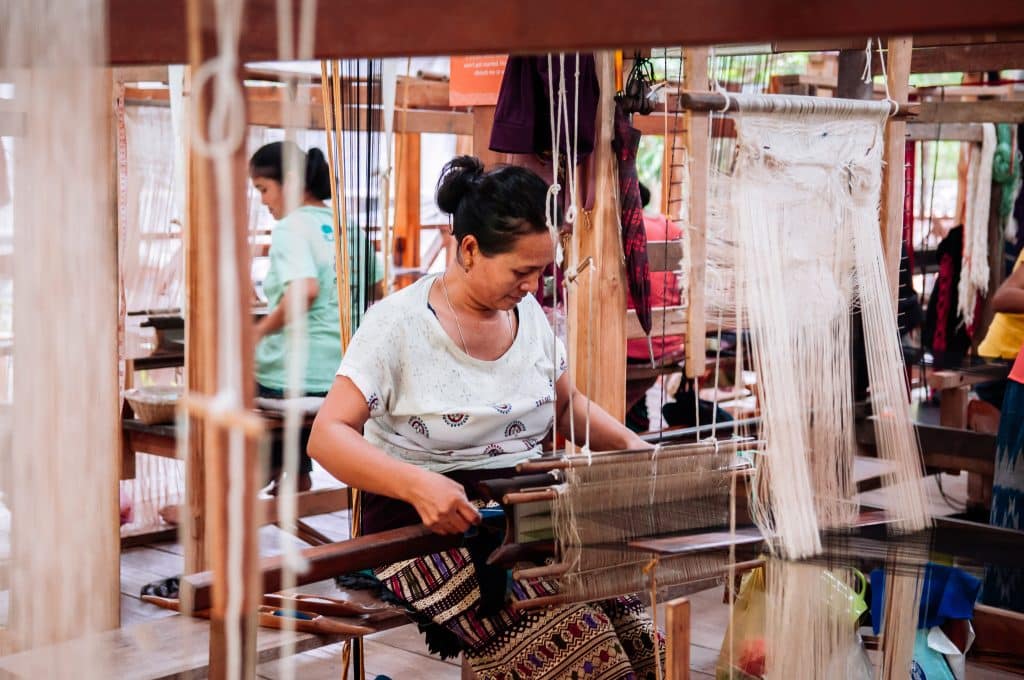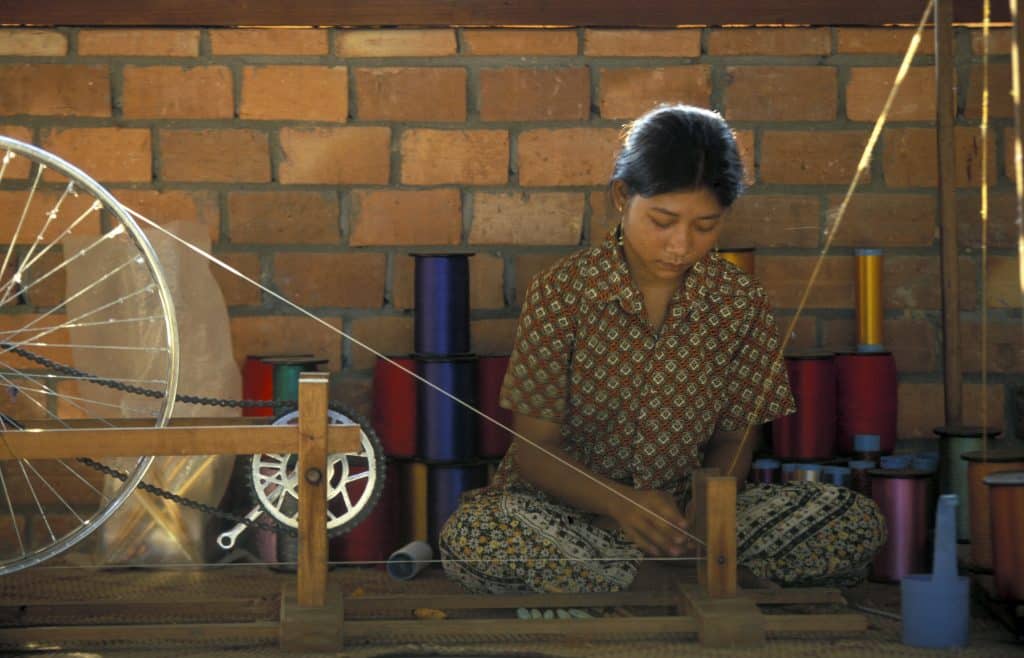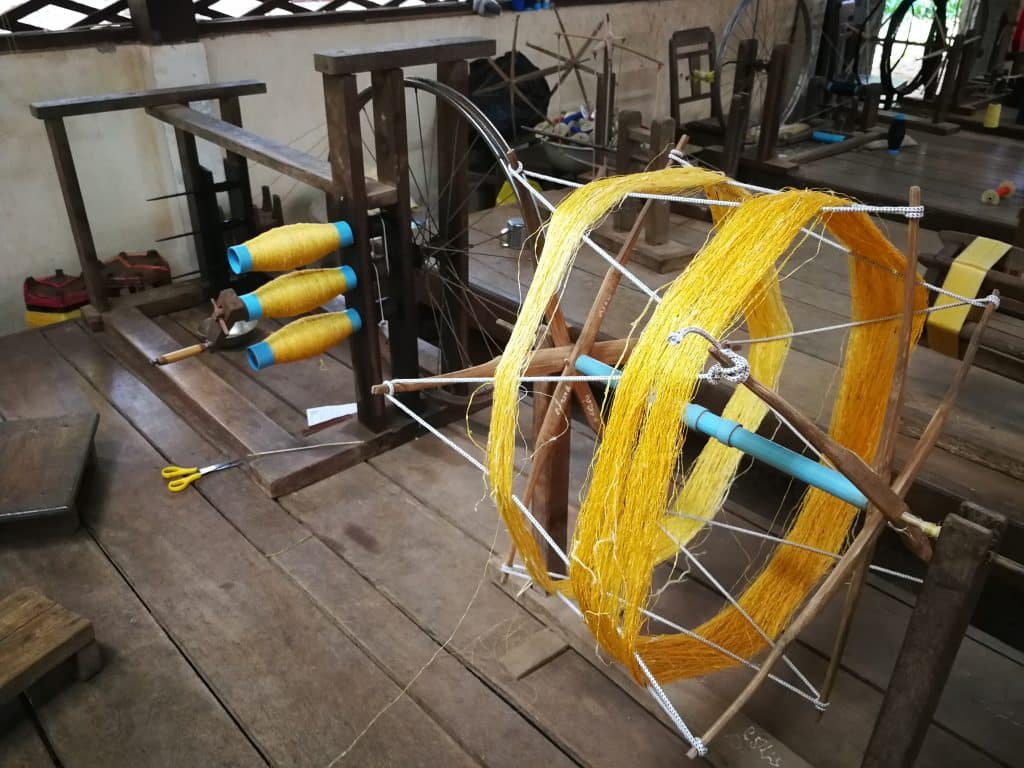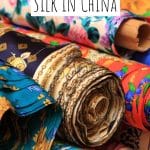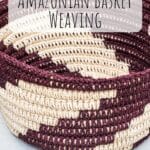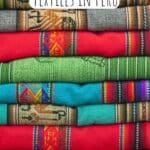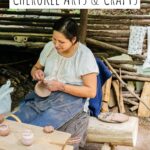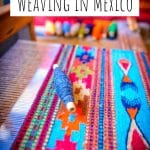A Brief History of Weaving in Cambodia
Weaving in Cambodia holds a rich cultural heritage that has been passed down through generations. From intricate textiles to beautifully crafted baskets, these traditional weaving techniques serve as a reflection of the country’s history, customs, and artistic traditions. In this article, we will explore the fascinating journey of weaving in Cambodia, highlighting its textile and basket techniques, cultural significance, and historical insights.

Where did traditional weaving in Cambodia originate?
Weaving in Cambodia dates back centuries, with evidence suggesting its presence during the Angkorian period (9th to 15th century). Early techniques involved the use of natural fibers such as silk, cotton, and hemp, which were sourced locally. Skilled artisans employed various methods, including backstrap and frame looms, to create textiles and baskets. Weaving was initially practiced within households, playing a vital role in meeting the community’s clothing and storage needs.
Textile Weaving Techniques:
(a) Ikat Weaving: One of the most distinctive weaving techniques in Cambodia is ikat, a process that involves dyeing the threads before they are woven. Intricate patterns are achieved by tying sections of the yarn to resist dye penetration, resulting in vibrant and complex designs.
(b) Brocade Weaving: Brocade, characterized by its intricate patterns and metallic threads, showcases the expertise of Cambodian weavers. This technique involves adding supplementary weft threads during the weaving process to create elaborate motifs, often inspired by nature or religious themes.
(c) Loom Weaving: Traditional looms, such as the frame loom, are commonly used in Cambodia. Skilled weavers work with precision, manipulating the warp and weft threads to produce finely woven textiles with intricate designs and textures.
Basket Weaving Techniques:
Basket weaving is another integral aspect of Cambodian craftsmanship, serving practical purposes in daily life. Techniques vary across regions, but common methods include coiling, plaiting, and twining. Weavers skillfully utilize natural materials such as bamboo, rattan, and palm leaves to create sturdy and functional baskets used for storage, carrying goods, or as decorative items.
What is the cultural significance of Cambodian weaving?
Weaving holds immense cultural significance in Cambodia, as it connects the present generation with their ancestors and traditional practices. Textiles, in particular, play a crucial role in religious ceremonies, weddings, and other important cultural events. The intricate motifs and colors used in the textiles often convey symbolic meanings, representing blessings, fertility, protection, or spirituality. Weaving techniques are also passed down through families, with weaving skills being a source of pride and identity within communities.
What is the history of Cambodian weaving like?
Throughout history, weaving in Cambodia has faced challenges due to various factors such as political turmoil, economic changes, and the impact of globalization. The Khmer Rouge regime (1975-1979) resulted in the loss of weaving traditions, as many weavers were killed or forced to abandon their craft. However, efforts to revive and preserve these ancient techniques have been made in recent years, with organizations and initiatives supporting local artisans, promoting their work, and empowering communities.
The art of weaving in Cambodia has evolved over centuries, weaving together the threads of history, tradition, and cultural heritage. The textile and basket techniques passed down through generations showcase the skill, creativity, and resilience of Cambodian weavers. As Cambodia continues to embrace its cultural roots while adapting to the modern world, weaving remains an integral part of the country’s identity, contributing to its vibrant tapestry of art, tradition, and community.
Where are some places I can experience Cambodian weaving traditions in person?
If you’re interested in experiencing Cambodian weaving traditions in person, here are some places you can visit:
Artisans Angkor, Siem Reap: Artisans Angkor is a renowned social enterprise dedicated to preserving traditional Cambodian arts and crafts, including weaving. They have workshops and showrooms where you can observe skilled weavers in action and purchase high-quality handcrafted textiles.
Phnom Penh: Cambodia’s capital city, Phnom Penh, offers various opportunities to witness and engage with Cambodian weaving traditions. Visit markets such as Russian Market (Psar Tuol Tompoung) and Central Market (Phsar Thmei), where you can find a wide range of woven textiles and baskets while observing local artisans at work.
Ock Pop Tok Living Crafts Center, Siem Reap and Luang Prabang: Although Ock Pop Tok is based in both Cambodia and Laos, their Living Crafts Center in Siem Reap provides an immersive experience in Cambodian weaving. They offer workshops, demonstrations, and guided tours where you can learn about traditional weaving techniques and try your hand at creating your own textiles.
Preah Vihear Province: Located in northern Cambodia, Preah Vihear Province is known for its traditional silk weaving. Visit local villages such as Preah Rumkel or Sra Em to witness the silk production process from rearing silkworms to dyeing and weaving silk threads.
Takeo Province: Takeo Province, south of Phnom Penh, is renowned for its silk weaving. The village of Koh Dach, also known as Silk Island, is a popular destination where you can observe the entire silk production process and interact with weavers.
Battambang: Battambang, a city in northwestern Cambodia, has a rich weaving heritage. Visit villages like Wat Kor and Kompong Phluk, where you can explore weaving workshops and observe local weavers preserving traditional techniques.
When planning your visit, it’s always a good idea to check local tourism websites, seek recommendations from locals, or contact specific weaving cooperatives or organizations to ensure you have the most up-to-date information on locations and availability!
Learn more about textiles in the area with this Brief History of Batiks in Southeast Asia.



